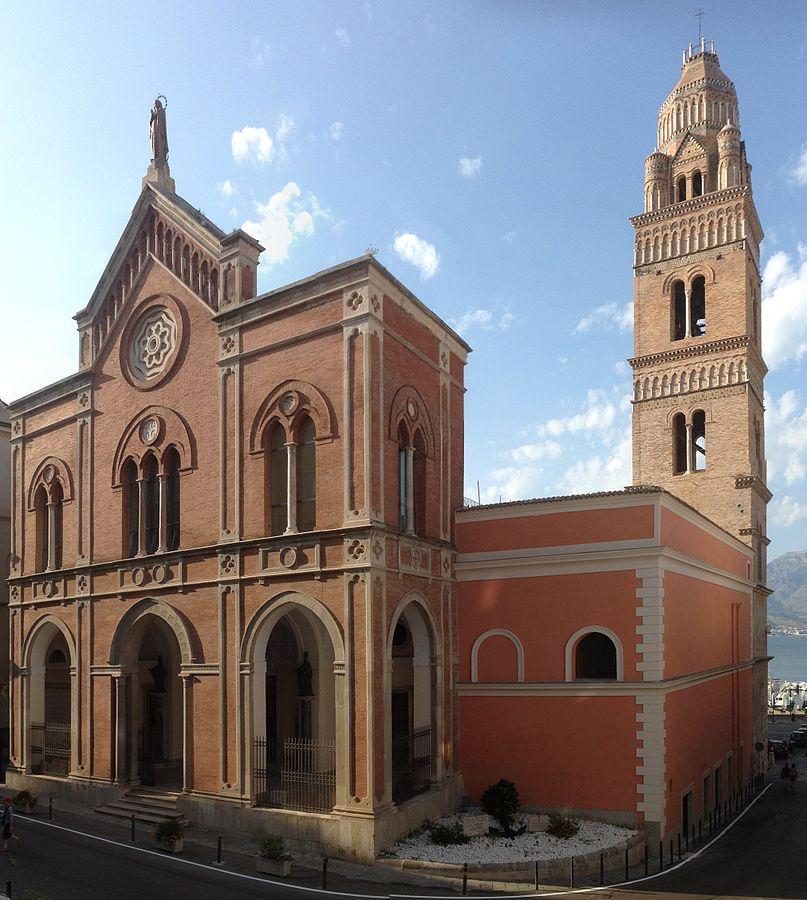Gaeta Cathedral
The ancient Cathedral of Gaeta, dedicated to Sant’Erasmo and San Marciano was consecrated in 1106. The main brick façade faces the Via del Duomo. It was constructed in 1908 in a Neo-Gothic style with an arched portico, a second floor with mullion windows with a travertine blind rose window above, and at the top of the stands a cast iron statue of the Madonna Immacolata. There is also an ornate bell tower. The cathedral of Gaeta contains the relics of Sant’ Erasmo and the of other saints – Marciano, Probo, Innocenzo, Casto, Secondino, Albina and Euporia. The church underwent major reconstruction in the 18th century at the request of King Ferdinand IV. The cathedral contains many works of art such as paintings by Carlo Saraceni, Giacinto Brandi and Giovanni Filippo Crisculo. Also there is a Paschal Candle of the late 13th century topped with a Gothic capitol. It is decorated with bas-relief carvings depicting the lives of Jesus Christ and Sant’Erasmo. Certain areas of floor are decorated with intricate geometric mosaic work by the Cosmati family of craftsmen.
About this building
For more information on this building visit http://gaeta.southlazioitaly.com/cathedral-erasmo-marciano/






